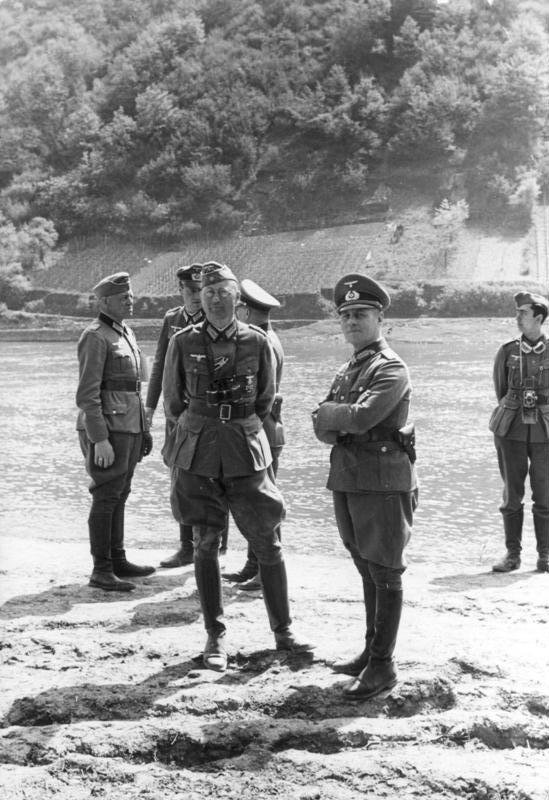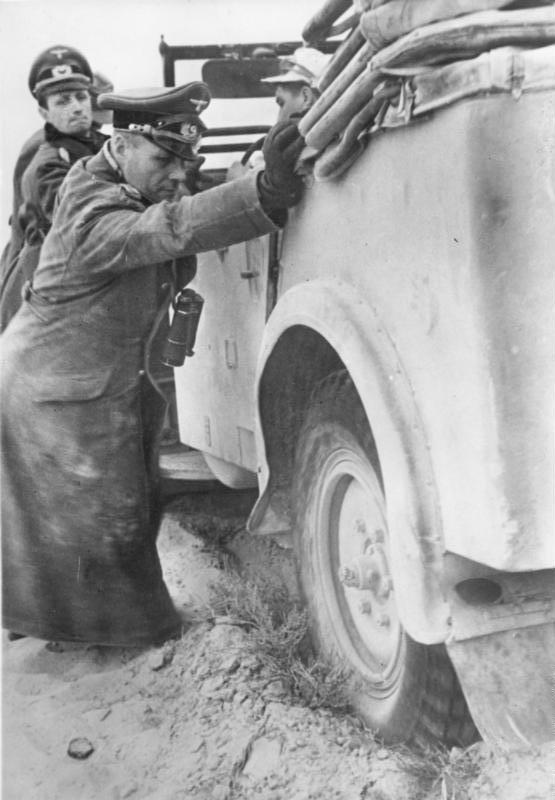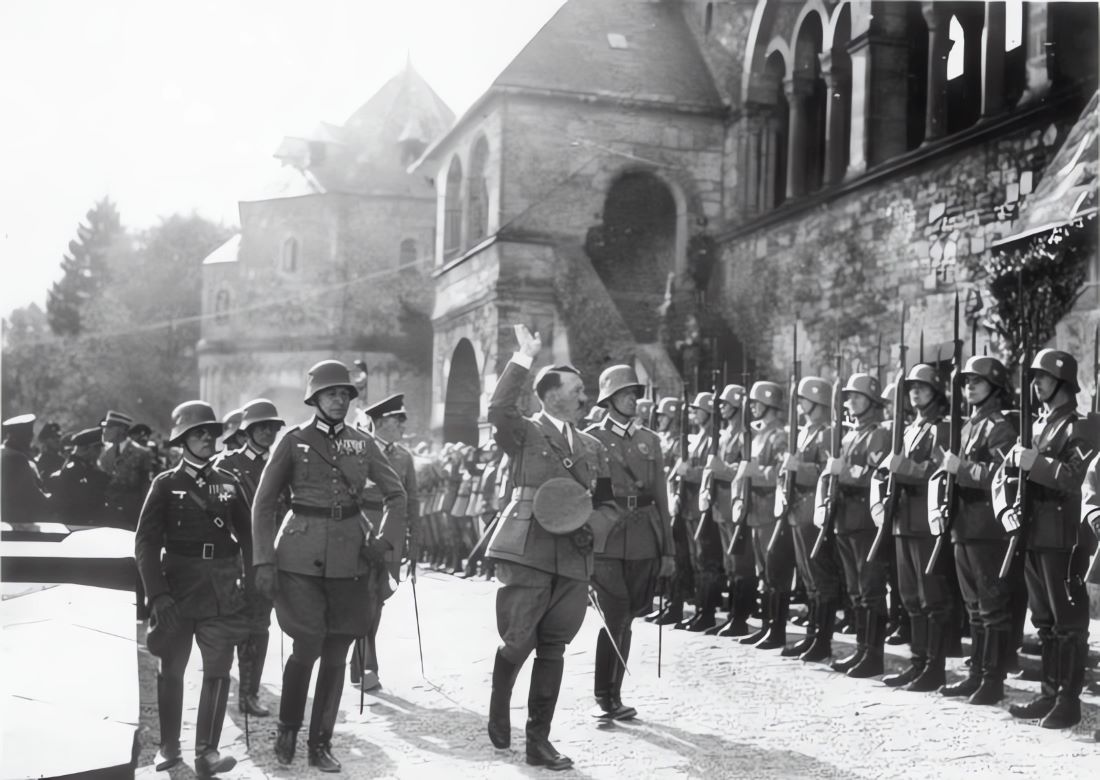Erwin Rommel, one of the most renowned German generals of World War II and often considered Hitler’s favorite general, is a figure enveloped in myth and legend. Known as the “Desert Fox,” Rommel’s military tactics and charismatic leadership made him a standout figure in the annals of military history. His fame extends beyond his battlefield achievements, as he became a symbol of tactical genius and chivalrous warfare. Rommel’s career was marked by remarkable successes and notable failures, making him a complex character whose legacy continues to intrigue historians and military enthusiasts alike.
Born in Heidenheim, Württemberg, in 1891, Erwin Rommel showed an early aptitude for outdoor activities over academic pursuits. Despite his lack of a military family background, Rommel pursued a career in the army, joining the Infanterie-Regiment König Wilhelm I in 1910 as an officer candidate. His early military career was marked by his involvement in World War I, where he distinguished himself as a brave and effective leader. Rommel’s exploits during the war earned him the prestigious Pour le Mérite, Germany’s highest military honor, highlighting his tactical prowess and bravery on the battlefield.
Following World War I, Rommel continued his military career in the Reichswehr, the armed forces of the Weimar Republic. His tenure in the post-war army was characterized by steady, if unremarkable, progression through the ranks. It was during this time that Rommel authored his famous book Infanterie Greift An (Infantry Attacks), which detailed his experiences and tactical insights from the Great War. This work further solidified his reputation as a capable and innovative military thinker. Rommel’s career took a significant turn with the rise of the Nazi regime, as his relationship with Hitler provided him opportunities for rapid advancement, setting the stage for his prominent role in World War II.
Commanding the 7th Panzer Division and the War in France
Erwin Rommel’s command of the 7th Panzer Division during the invasion of France in 1940 was a defining period in his military career. His relationship with Hitler played a crucial role in his rapid rise through the ranks. Rommel’s direct access to Hitler, often bypassing traditional military channels, allowed him to secure the command of the newly formed 7th Panzer Division. In his letters to his wife, Rommel frequently mentioned his interactions with Hitler, highlighting the trust and confidence the Führer placed in him.
The 7th Panzer Division, under Rommel’s leadership, became known as the “Ghost Division” due to its rapid and unpredictable maneuvers. During the invasion of France, Rommel demonstrated remarkable strategic acumen, particularly in the Battle of Sedan and the subsequent advance toward the English Channel. His division’s ability to exploit weaknesses in the French defenses allowed for swift breakthroughs, often catching the enemy off guard. Rommel’s insistence on leading from the front and his hands-on approach to command inspired his troops and instilled a sense of urgency and momentum that proved decisive in their rapid advance.

One of the most notable engagements of the 7th Panzer Division was the encirclement of the French 1st Armored Division and elements of the British Expeditionary Force near Arras. Despite facing heavily armored British Matilda tanks, Rommel’s innovative use of anti-tank guns and coordinated assaults resulted in a significant victory. His ability to adapt to the dynamic battlefield conditions and his relentless pursuit of the enemy contributed to the overall success of the German Blitzkrieg strategy in France. By the end of the campaign, Rommel’s division had captured vast numbers of prisoners and equipment, solidifying his reputation as one of Germany’s most capable and daring commanders.
The Desert Fox in North Africa
Erwin Rommel’s campaign in North Africa earned him the legendary nickname “Desert Fox” due to his cunning strategies and swift maneuvers. Appointed by Hitler to lead the Afrika Korps in 1941, Rommel quickly demonstrated his prowess in desert warfare. His relationship with Hitler remained strong during these early days, with Rommel often communicating directly with the Führer, bypassing traditional military channels.
Rommel’s early victories in North Africa were marked by his innovative tactics and bold leadership. The capture of Tobruk in June 1942 was one of his most significant achievements, where he managed to outmaneuver and defeat a well-entrenched British force. This victory not only bolstered the morale of his troops but also earned him a promotion to Field Marshal. Rommel’s tactics involved rapid, surprise attacks and the effective use of armored divisions, which allowed him to achieve remarkable gains despite the logistical challenges.
However, Rommel’s fortunes began to change as the Allies strengthened their positions and supply lines. The Battle of El Alamein in late 1942 marked a turning point. Despite his tactical brilliance, Rommel’s forces were eventually overwhelmed by the superior numbers and resources of the Allied forces. The defeat at El Alamein forced Rommel into retreat, and by early 1943 he was recalled to Germany. This marked the end of his campaign in North Africa, but his legacy as the “Desert Fox” endured.
Return to Germany and Involvement with the Conspirators
Upon his return to Germany in early 1943, Erwin Rommel faced a dramatically different war landscape. The defeats in North Africa had taken their toll, and the tide of the war was turning against the Axis powers. During this period, Rommel’s relationship with Hitler began to strain. Although he remained loyal publicly, privately he grew increasingly disillusioned with Hitler’s strategic decisions and the overall direction of the war.
Rommel’s exact role in the conspiracy against Hitler remains a subject of debate. While it is clear that Rommel was aware of the growing discontent among the German military leadership, there is no definitive evidence that he was actively involved in the planning or execution of the assassination attempt. Conspirators sought his support, and he was sympathetic to their cause, believing that removing Hitler might be necessary to save Germany. However, Rommel advocated for arresting Hitler and putting him on trial rather than assassination, reflecting his preference for a more legalistic and honorable resolution.
The aftermath of the failed July 20 plot placed Rommel in a precarious position. Despite his lack of direct involvement, his knowledge of the conspiracy and his high-profile status made him a target for retribution. Faced with the threat of a public trial that would endanger his family and tarnish his legacy, Rommel was given an ultimatum: commit suicide quietly or face a humiliating show trial. On October 14, 1944, Rommel chose to end his life, accepting poison rather than subjecting his family to the regime’s vengeance.
Relationship with Hitler and the Creation of the Rommel Legend
Erwin Rommel’s relationship with Adolf Hitler was complex and evolved over the course of World War II. Initially, Rommel’s career benefited immensely from his association with Hitler, who admired his successes and used him as a propaganda tool to boost morale. However, as the war progressed and Germany faced increasing setbacks, Rommel’s faith in Hitler’s strategic decisions waned.

The creation of the Rommel legend was a multifaceted process involving both German and Allied propaganda. During the North African campaign, German media under Joseph Goebbels portrayed Rommel as a heroic figure meant to inspire the public. At the same time, British and American media also contributed to the myth from a different angle—Rommel became the face of the enemy, a respected opponent whose tactical genius had to be overcome.
After the war, Rommel’s legend continued to grow. Figures such as his former chief of staff, General Hans Speidel, helped reshape his image as a symbol of the “good” German soldier who opposed Hitler. This narrative was further popularized by Desmond Young’s 1950 biography and the 1951 film The Desert Fox, which portrayed Rommel as a loyal soldier with noble qualities. Historian Basil Liddell Hart also contributed to this myth, emphasizing Rommel’s professional and humane attributes while distinguishing him from the crimes of the Nazi regime.
Historical Challenge: Can You Conquer the Past?
Answer more than 18 questions correctly, and you will win a copy of History Chronicles Magazine Vol 1! Take our interactive history quiz now and put your knowledge to the test!

